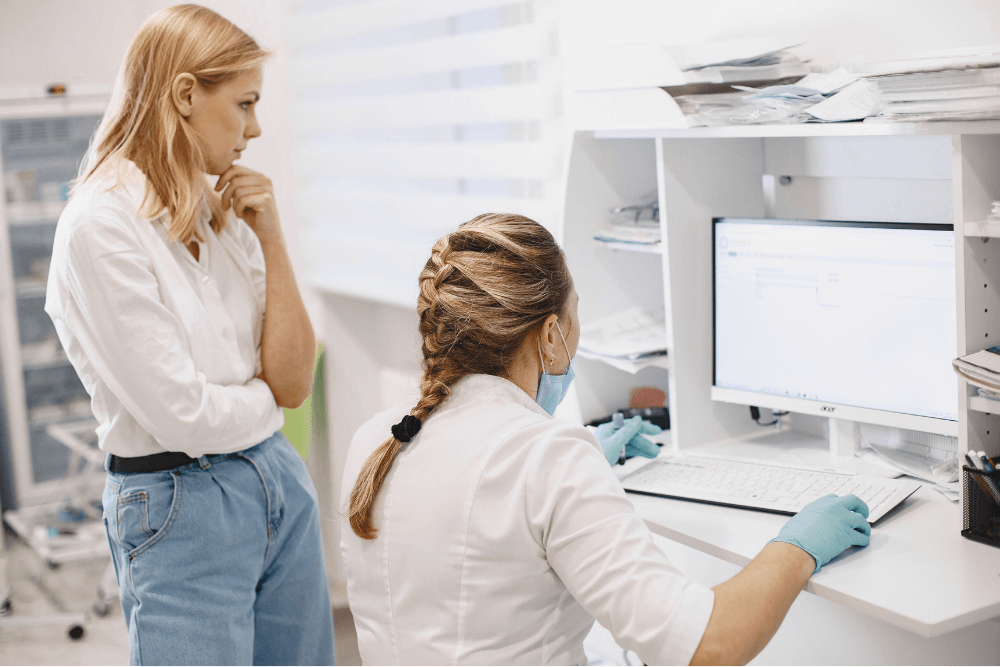.png?v=e1cb4d4efd2676b4e52eca3056453acb)
Data Visualisation in Clinical Research

Data Visualisation in Clinical Research: Illuminating Insights Through Innovation
In the dynamic world of clinical research, data is the cornerstone of progress. With the exponential growth in data volumes, the ability to visually interpret complex datasets has never been more essential. Data visualisation in clinical research is not just a tool - it’s a transformational force that aids in interpreting results, making informed decisions, and ultimately, advancing patient care.
In this blog, we’ll explore how data visualisation has evolved, delve into the latest technological advancements, discuss emerging trends, and review the most popular software that is shaping the field.
The Evolution of Data Visualisation in Clinical Research
Historically, clinical research was dominated by extensive tables, dense statistical reports, and written narratives. Early data visualisation efforts were largely limited to simple graphs and charts produced manually or with rudimentary software. While these early efforts laid the groundwork for data interpretation, they often lacked the depth and interactivity required to fully unlock insights from the vast and intricate datasets typical in clinical research.
As research methodologies advanced, so did the complexity of the data collected. This necessitated a move towards more sophisticated visualisation techniques. Over the past few decades, the evolution of data visualisation has been marked by a shift from static images to dynamic, interactive displays. Modern visualisation tools now allow researchers to explore data from multiple angles, identify hidden patterns, and make real-time adjustments—all crucial for drawing meaningful conclusions from complex clinical datasets.

Technological Advancements Driving Innovation
The rapid development of technology has played a pivotal role in enhancing data visualisation in clinical research. Several key advancements have revolutionised how data is processed, analysed, and displayed:
Big Data and High-Performance Computing: The advent of big data technologies has enabled the management of enormous datasets with unprecedented speed and efficiency. High-performance computing resources now allow researchers to run complex models and simulations that were once computationally prohibitive.
Artificial Intelligence (AI) and Machine Learning (ML): AI and ML are transforming data visualisation by automating pattern recognition and predictive analytics. These technologies not only streamline the analysis process but also enhance the accuracy of insights derived from the data. For instance, algorithms can now identify correlations and trends that might be overlooked during manual reviews.
Interactive Dashboards and Real-Time Visualisation: The development of interactive dashboards has empowered researchers to drill down into datasets in real time. These dashboards facilitate a more intuitive understanding of data trends and allow for rapid hypothesis testing. The integration of real-time visualisation ensures that data is not only accessible but also actionable, even as new data streams in.
Cloud Computing and Collaborative Platforms: Cloud-based solutions have democratized access to powerful visualisation tools. Collaborative platforms enable researchers from different parts of the world to work together seamlessly, sharing insights and refining analyses. This global collaboration is critical in clinical research, where pooling expertise can lead to breakthroughs in understanding complex diseases.
Future Trends Impacting Data Visualisation
Looking ahead, several emerging trends are poised to further enhance the role of data visualisation in clinical research:
Augmented and Virtual Reality (AR/VR): AR and VR technologies are beginning to be explored as innovative ways to represent and interact with data. Imagine a scenario where researchers can virtually step inside a three-dimensional dataset to examine molecular interactions or visualize patient outcomes over time. Such immersive experiences could revolutionise the way we understand and interpret clinical data.
Enhanced Data Storytelling: The future of data visualisation lies in its ability to tell a compelling story. Enhanced data storytelling techniques that combine narrative with visual elements are expected to become more prevalent. These approaches not only make data more accessible but also more persuasive in communicating findings to diverse audiences, including clinicians, regulators, and patients.
Integration of Genomic and Multi-Omics Data: With the rise of personalised medicine, integrating genomic data with clinical outcomes is a growing focus. Advanced visualisation tools that can handle multi-omics datasets—combining genomics, proteomics, metabolomics, and more—will be crucial in uncovering the molecular underpinnings of diseases and tailoring treatments to individual patients.
Increased Emphasis on Data Security and Privacy: As data visualisation becomes more advanced, ensuring the security and privacy of patient data remains a top priority. Future developments are likely to see more robust encryption methods and privacy-preserving analytics integrated into visualisation platforms, ensuring that sensitive information is safeguarded without compromising the analytical capabilities.
Overview of the Most Used Software in Clinical Research Visualisation
Several software solutions have become industry standards for data visualisation in clinical research. Here’s an overview of some of the most popular tools:
Tableau: Renowned for its user-friendly interface and robust analytical capabilities, Tableau is widely used in clinical research for creating interactive dashboards and visual reports. Its drag-and-drop functionality makes it accessible for researchers with varying levels of technical expertise.
R and RStudio: As a powerful statistical programming language, R is favored for its flexibility and extensive package ecosystem. RStudio, its integrated development environment (IDE), is particularly popular among data scientists and statisticians in clinical research, offering advanced plotting libraries like ggplot2 that enable the creation of intricate and customizable visualisations.
Python (with libraries such as Matplotlib, Seaborn, and Plotly): Python’s versatility and the richness of its visualisation libraries have made it a mainstay in clinical data analysis. Matplotlib and Seaborn offer static and dynamic plotting capabilities, while Plotly provides interactive graphing tools that are highly valuable in exploring complex datasets.
SAS Visual Analytics: SAS is a long-established player in clinical research data analysis. Its Visual Analytics suite is particularly beneficial for those already embedded in the SAS ecosystem, offering robust tools for data exploration, visual reporting, and advanced analytics.
Power BI: Developed by Microsoft, Power BI has gained traction due to its seamless integration with other Microsoft products and its capacity for creating detailed, interactive visualisations. Its ability to combine data from multiple sources makes it a powerful tool for comprehensive clinical data analysis.
Why Data Visualisation is Impactful in Clinical Research
Data visualisation is not just an aesthetic enhancement—it’s a critical component of modern clinical research with far-reaching benefits:
Enhanced Data Interpretation: Visual representations of data enable researchers to quickly identify patterns, trends, and outliers. This is essential in clinical research where understanding subtle differences can have significant implications for patient outcomes.
Improved Communication: The ability to translate complex datasets into clear, concise visual formats facilitates better communication among researchers, clinicians, and stakeholders. Visual tools bridge the gap between data experts and decision-makers, ensuring that findings are effectively disseminated and understood.
Faster Decision-Making: In clinical research, time is often of the essence. Real-time dashboards and interactive visualisations allow for rapid data interpretation, which can accelerate the decision-making process. This can be particularly crucial in clinical trials, where timely adjustments may be necessary to enhance patient safety and trial efficacy.
Cost Efficiency: By streamlining data analysis and reducing the time required to interpret complex datasets, visualisation tools can lead to significant cost savings. Efficient data handling and quicker insights translate to faster research cycles and a more rapid path from discovery to patient benefit.
Facilitation of Collaborative Research: With the rise of global clinical trials and collaborative research initiatives, having a common visual language is more important than ever. Data visualisation tools foster collaboration by providing a shared platform where insights can be easily exchanged, compared, and built upon.
Conclusion
In the rapidly evolving landscape of clinical research, data visualisation stands out as a powerful tool that bridges the gap between complex data and actionable insights. From its humble beginnings as simple graphs and charts, data visualisation has grown into a sophisticated discipline powered by big data, AI, and interactive platforms. As technological advancements continue to accelerate, the future promises even more innovative ways to explore and understand clinical data—through AR, enhanced storytelling, and integrative multi-omics visualisation.
For researchers and clinicians alike, the ability to visualize data not only simplifies the interpretation process but also enhances communication, speeds up decision-making, and ultimately drives cost efficiencies. As clinical research moves toward a more data-driven future, embracing advanced visualisation techniques will be essential in unlocking the full potential of research findings and, most importantly, in advancing patient care.
Data visualisation in clinical research is much more than a technical requirement—it’s a strategic asset that empowers researchers to make informed decisions, communicate complex findings effectively, and pave the way for groundbreaking medical advancements. Whether you are a seasoned researcher or new to the field, the tools and trends discussed here offer a glimpse into a future where data is not just seen, but truly understood.
Sign up for post alerts
ICON & You
The potential of together.
Careers that improve the lives of patients, our clients and each other. Are you ready to make a difference?
View jobsRelated jobs at ICON
Salary
Location
US, San Antonio, TX, IDS
Location
San Antonio
Remote Working
Office Based
Business Area
ICON Full Service & Corporate Support
Job Categories
Clinic
Job Type
Temporary Employee
Description
We are currently seeking a Medical Research Associate to join our diverse and dynamic team. As an MRA at ICON, you will support the design, execution, and management of clinical trials and research st
Reference
JR138297
Expiry date
01/01/0001

Author
Lauren Berretta
Author
Lauren BerrettaSalary
Location
US, Blue Bell (ICON)
Location
Blue Bell
Remote Working
Remote
Business Area
ICON Strategic Solutions
Job Categories
Drug / Device Regulatory Affairs
Job Type
Permanent
Description
We are currently seeking a Manager, Regulatory Strategy with regulatory CMC expertise to join our diverse and dynamic team. As a Manager, Regulatory Strategy at ICON, you will play a pivotal role in s
Reference
JR136793
Expiry date
01/01/0001

Author
Melissa Benner
Author
Melissa BennerSalary
Location
Mexico, Mexico City
Location
Mexico City
Remote Working
Remote
Business Area
ICON Strategic Solutions
Job Categories
Drug Safety
Job Type
Permanent
Description
We are currently seeking a Graduate Pharmacovigilance Associate to join our diverse and dynamic team. As a Graduate Pharmacovigilance Associate at ICON, you will play an essential role in supporting t
Reference
JR140906
Expiry date
01/01/0001

Author
Rita Villavicencio
Author
Rita VillavicencioSalary
Location
Mexico, Mexico City
Location
Mexico City
Remote Working
Remote
Business Area
ICON Strategic Solutions
Job Categories
Drug Safety
Job Type
Permanent
Description
We are currently seeking a Graduate Pharmacovigilance Associate to join our diverse and dynamic team. As a Graduate Pharmacovigilance Associate at ICON, you will play an essential role in supporting t
Reference
JR140905
Expiry date
01/01/0001

Author
Rita Villavicencio
Author
Rita VillavicencioRelated stories
.png)
Teaser label
Our PeopleContent type
BlogsPublish date
12/10/2025
Summary
Zhong Yao's Journey at ICON Plc in China Zhong Yao's career in clinical research spans over two decades, with leadership roles across major CROs and a commitment to advancing healthcare in China.
.png)
Teaser label
IndustryContent type
BlogsPublish date
12/01/2025
Summary
How Data Moves Through a Clinical Trial Clinical research depends on one essential element: trustworthy data. Every safety decision, every statistical conclusion and every regulatory submission i
.png)
Teaser label
IndustryContent type
BlogsPublish date
11/28/2025
Summary
Quality and Compliance for New Entrants: A Plain Language Guide Quality and compliance can feel like dense subjects when you are entering clinical research for the first time. Many job
Recently viewed jobs
Impactful work. Meaningful careers. Quality rewards.
At ICON, our employees are our greatest strength. That’s why we are committed to empowering you to live your best life, both inside and outside of work. Whether your ambition is lead a global team, become a deep scientific or technical expert, work in-house with our customers or gain experience in a variety of different ICON functions, we will support you in realising your full potential. Learn more about Our Culture at ICON
